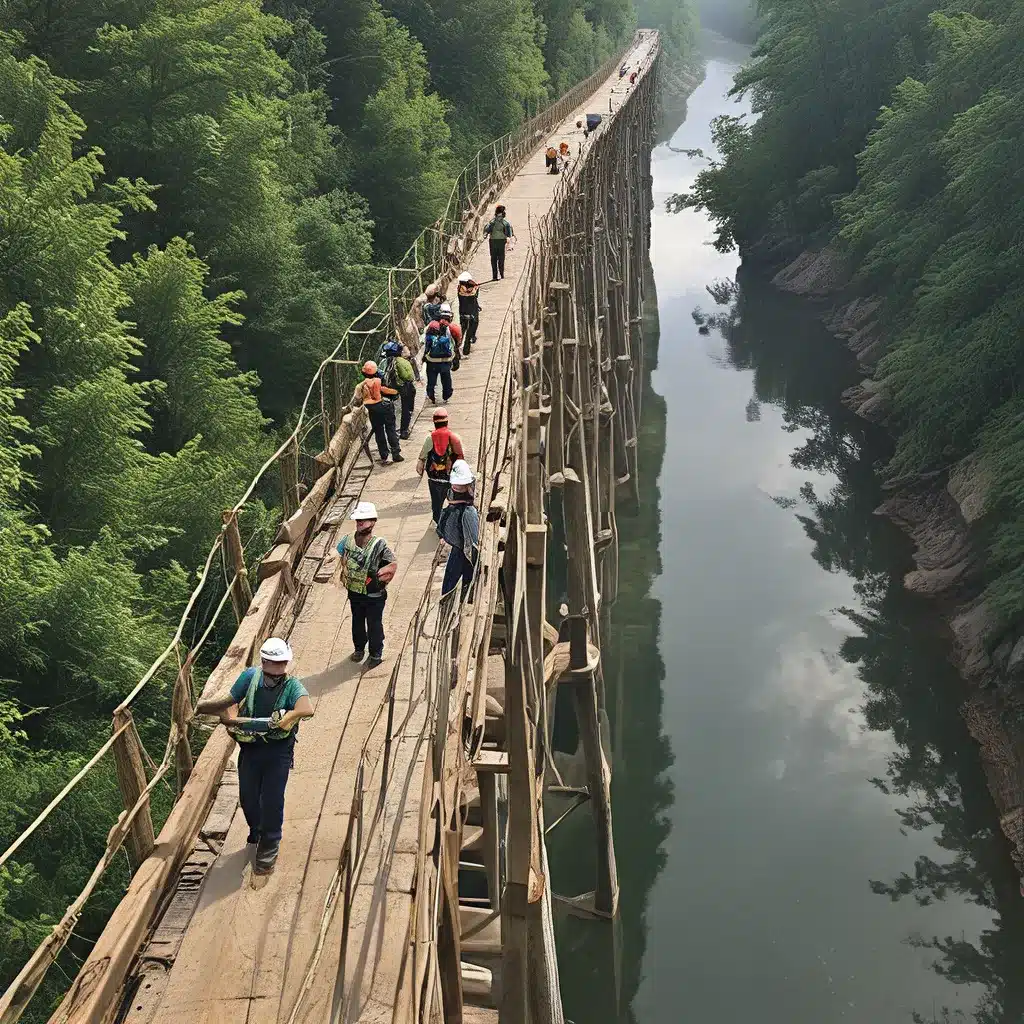
For the longest time, I thought employee safety and environmental sustainability were like oil and water – completely separate and incapable of mixing. After all, what could protecting workers from workplace hazards possibly have to do with reducing a company’s carbon footprint or improving its recycling efforts? Boy, was I in for a rude awakening.
As I dove deeper into the world of environmental services, I realized that the connection between safety and sustainability is not just tangential, but inextricable. In fact, the two are so intertwined that ignoring one in favor of the other is a recipe for disaster, both for the organization and the planet.
The Symbiotic Relationship
Let’s start with the most obvious link: human capital. Employees are the beating heart of any business, and their health and well-being should be the top priority. After all, how can a company hope to achieve its sustainability goals if its workforce is constantly sidelined by injuries, illnesses, or low morale?
Investing in robust safety protocols isn’t just the right thing to do – it also yields long-term benefits for the organization. A healthy, engaged, and motivated workforce is crucial for driving productivity, innovation, and long-term success. It’s the foundation upon which all other sustainability initiatives must be built.
But the connection goes beyond just protecting the people. Reducing environmental impact is another area where safety and sustainability converge. In industries that deal with hazardous materials or processes, implementing eco-friendly practices to enhance safety – think minimizing waste, reducing energy consumption, or adopting greener technologies – not only safeguards the planet but also bolsters the company’s reputation as a socially responsible entity.
As Antea Group’s experts point out, “If you’re not in compliance, you’re never going to get to sustainability and ESG strategies and outcomes.” EHS (Environmental, Health, and Safety) programs don’t just ensure regulatory compliance – they also drive operational efficiency, making them indispensable partners in the pursuit of ESG (Environmental, Social, and Governance) goals.
Building Resilience, Inside and Out
But the benefits of aligning safety and sustainability don’t stop there. By fostering a culture of safety, companies are also building operational resilience – the kind that helps them weather storms, both metaphorical and literal.
Imagine a scenario where a natural disaster strikes, disrupting supply chains and production lines. A company with robust safety protocols in place is more likely to bounce back quickly, having already established contingency plans and emergency response procedures. On the other hand, an organization that has neglected worker safety may find itself crippled by the aftermath, struggling to get back on its feet.
And let’s not forget the cost-saving potential of this symbiotic relationship. Preventing accidents and illnesses through safety measures can lead to significant long-term savings, from reduced healthcare costs and workers’ compensation claims to avoided legal liabilities. These cost savings can then be reinvested into sustainability initiatives, creating a positive feedback loop that benefits both the bottom line and the environment.
Reputation Matters
In today’s hyper-connected, socially conscious world, a company’s corporate reputation has become a make-or-break factor in its success. Customers, investors, and even potential employees are increasingly drawn to organizations that prioritize both safety and sustainability.
Think about it – would you rather work for a company that’s constantly making headlines for workplace accidents and environmental infractions, or one that’s known for its commitment to protecting its people and the planet? The answer is a no-brainer, and smart companies are taking note.
By seamlessly integrating safety and sustainability, organizations can not only attract top talent but also gain the trust and loyalty of their stakeholders. This, in turn, can open the door to new partnerships, investments, and market opportunities – a virtuous cycle that propels the business forward while leaving a positive impact on the world.
Bridging the Gap
The truth is, the connection between employee safety and sustainability is not just a nice-to-have – it’s a strategic imperative for any organization that wants to thrive in the 21st century. By recognizing and embracing this inextricable link, companies can unlock a world of possibilities, from enhanced resilience and cost-savings to improved brand reputation and long-term success.
Inland Waters, for example, has made safety and sustainability the cornerstones of its environmental services offering. By integrating these two critical components, the company has not only protected its most valuable assets (its employees) but also positioned itself as a leader in the industry, trusted by clients and admired by competitors.
So, if you’re an environmental services professional, I encourage you to take a closer look at the relationship between safety and sustainability. Chances are, you’ll be surprised by just how intertwined they are – and how much untapped potential lies in bridging that gap. After all, the future of our planet and our businesses depends on it.


